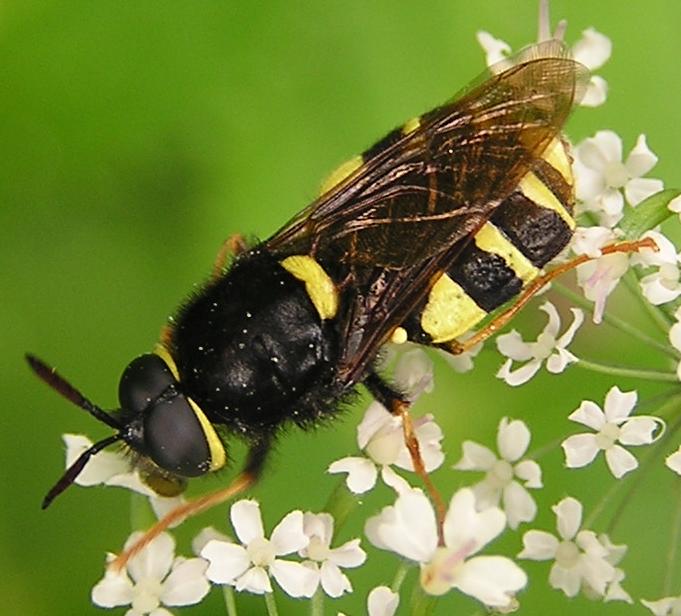Diptera.info :: Identification queries :: Diptera (adults)
Who is here? 1 guest(s)
|
Stratiomys chamaeleon? -> S. concinna
|
|
| Michael Becker |
Posted on 03-02-2009 07:34
|
|
Member Location: Germany, Neuss Posts: 1268 Joined: 16.01.07 |
Hello, is this Stratiomys chamaeleon? I found it in July in a mountain in Austria. Thanks, Michael Michael Becker attached the following image:  [57.01Kb] Edited by Michael Becker on 04-02-2009 07:03 |
|
|
|
| Lukasz Mielczarek |
Posted on 03-02-2009 17:29
|
|
Member Location: Poland, Krakow Posts: 498 Joined: 27.09.06 |
I think Stratiomys concinna Meigen 1822 but I never seen a colected and living specimens. Lukas Edited by Lukasz Mielczarek on 03-02-2009 17:32 |
|
|
|
| Michael Becker |
Posted on 03-02-2009 21:44
|
|
Member Location: Germany, Neuss Posts: 1268 Joined: 16.01.07 |
Hello Lukas, thank you for your answer. It seems Stratiomys concinna is not a very frequent species. Du you think the determination is certain enough for the gallery? And how at all do I distinguish the stratiomys species. In the moment I can't see difference between some of the species. Thanks, Michael |
|
|
|
| Lukasz Mielczarek |
Posted on 03-02-2009 23:36
|
|
Member Location: Poland, Krakow Posts: 498 Joined: 27.09.06 |
In my Polish key (Trojan,1963) 1.Antennae black *S. longicornis *S. potamida *S. cenisia *S. chamaeleon *S. singularior(=furcata) *S. equestris - last antennal segment red or brown-red *first segment black or brownish - S. concinna * all segments red ....... - S. ruficornis Stratiomys on the photo have red antennae and hairs are black on thoracic dorsum (chamaeleon with yellow) I can send key but in polish.(I haven't time to translate) |
|
|
|
| Michael Becker |
Posted on 04-02-2009 07:02
|
|
Member Location: Germany, Neuss Posts: 1268 Joined: 16.01.07 |
Hello Lukas, thank you for your offer, but I don't need the key. I just wanted to know, which characteristics I have to look for, when I meet a Stratiomys species next time. I looked other pictures from the same fly, and the last segments of the antenna are in all pictures very clearly redish-black or dark brown. So S. concinna seems rather certain. Thanks, Michael |
|
|
|
| Jump to Forum: |















